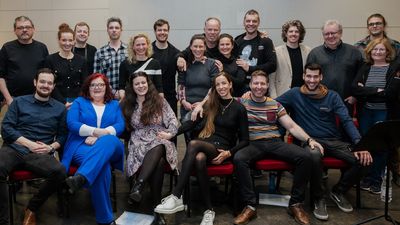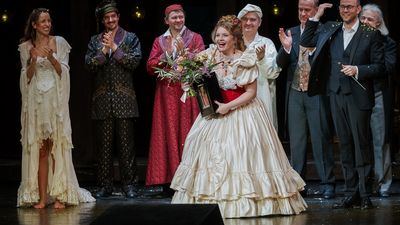
Created to Maurice Ravel’s Bolero and the music of Steve Reich, Erik Satie and others, the choreographies of the 1st Steps show address facets of life that affect us all in the irresistibly thrilling language of dance of Hans van Manen, Johan Inger, Jiří Kylián and Alexander Ekman.
This September will see the premieres of previous years, Trois Gnossiennes, Falling Angels and Walking Mad, joined by the new production Episode 31, and it is with these masterpieces that the Hungarian National Ballet will be taking its own “first steps” in the 2019/2020 season.
Trois Gnossiennes is the third and middle part of Hans van Manen’s Piano Variations, created between 1980 and 1984. Manen crafted a sensitive choreography to Erik Satie’s magical and melancholy music, which is about resignation, trust and harmony. The work has a Hungarian connection too: the Dutch choreographer created the female role in the pas de deux for the world-famous ballerina Mária Aradi, now a ballet master with the Hungarian National Ballet.
Johan Inger’s Walking Mad was conceived for the stage with nine dancers moving to the music of Ravel’s Bolero. The piece reflects the Socratic principle that “the greatest blessings find us in the face of madness”. “The famous Bolero from Ravel with its sexual, almost kitsch history was the trigger for me to make my own version. I quickly decided that it was going to be about relationships in different forms and circumstances. I came up with the idea of a wall that could transform the space during this minimalistic music and create small pockets of space and situations. Walking Mad is a journey in which we encounter our fears, our longings and the lightness of being,” said the work’s creator.
Falling Angels is a choreography presenting eight female dancers moving to the first movement of Steve Reich’s 1971 percussion work, Drumming. The ballet portrays the dancers’ attempts to reach perfection, in which various attributes of the female psyche and female existence also appear: pregnancy, birth and motherhood. During this creative period, Jiří Kylián was deeply influenced by surrealism and minimalism, which can be particularly sensed in his choreography. The suggestive female figures build up to the edgy rhythmic music with great intensity through classical and contorted sequences of motions.
“Episode 31 was originally created for the 2011 graduating class of The Juilliard School in New York City. The work is choreographed for a large group and consists of a number of fast-paced scenes created by the dancers. From an upbeat drumming sequence to a quiet comment on beauty by Erik Satie, this piece is a showcase for the energy of these young, athletic dancers, feeding on their enthusiasm,” explains Alexander Ekman about the creation of the work. After its premiere in New York, Ekman’s choreography was shown at the Edinburgh Festival and has been added to the repertoires of the Finnish National Ballet and the Royal New Zealand Ballet, among others. Starting from September 2019, it adds to the colour of the Hungarian National Ballet’s pallet.
Venue: Erkel Theatre
Premiere: 6 September 2019
Further dates: 7, 8, 17 & 18 September 2019



